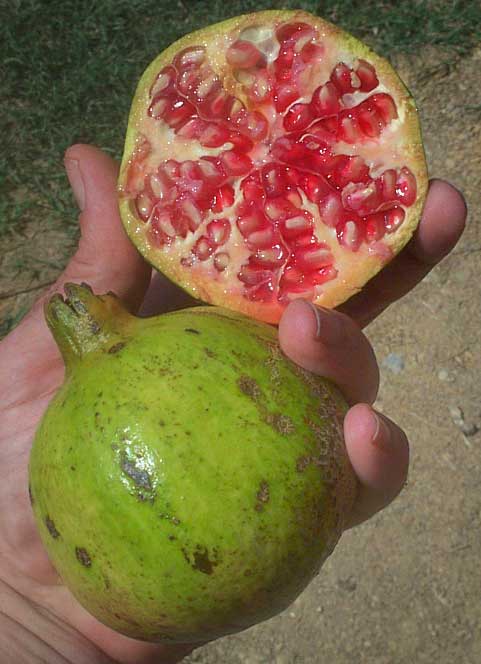Excerpts from Jim Conrad's
Naturalist Newsletter
from the August 17, 2007 Newsletter issued from Sierra Gorda Biosphere Reserve, QUERÉTARO, MÉXICO
POMEGRANATES/ GRANADAS
The mushroom-picking lady gave us some pomegranates from next to her house. You can see one I cut open below:

Pomegranate fruits are thick-skinned, several-celled berries with seeds enmeshed in juicy pulp. It's the pulp you eat, which can be very sweet and juicy. The seeds are so soft that I just chew them, but I suspect some finicky sorts spit them out.
Notice how the fruit bears a "crown" consisting of 5-7 thick, leathery sepals. Sepals are the separate divisions of the usually green, leafy, cuplike calyx appearing beneath the corollas of typical flowers. Sepals usually wither and drop away as a blossom's ovary develops into a fruit, but pomegranates for some reason decided they needed those sepals.
Back when I studied botany pomegranate fruits and flowers were regarded as so weird that pomegranate species were assigned to their own two-species family, the Pomegranate Family, or Punicaceae. However, recent studies place them into the Loosestrife Family, the Lythraceae, the most famous member of which is the Crape Myrtle.
Pomegranate plants are deciduous shrubs or trees up to 20 feet high. They're native of southern Asia but have been naturalized in many places. They're PUNICA GRANATUM, in Spanish called Granadas.